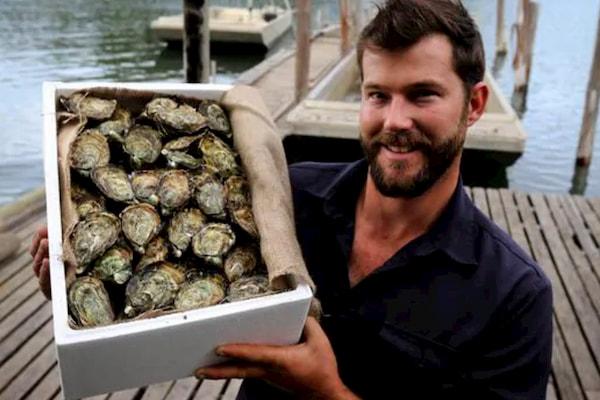What size oysters will the system grade?
Vision Grader: The smallest oysters that we have seen graded are about 25mm overall length, but it is more practical to work on about 30mm as a minimum and up to about 150mm as a maximum.
Water grader: A machine equipped with the venturi option will grade 1mm to 80mm long oysters.
I've heard the SED grader is noisy. Is this true?
This used to be a problem with the older model vision grading machines, particularly in the process sheds made from “sandwich panel”, which tend to trap and echo sound. Since the problem surfaced, we have put considerable effort into new air jet technology and sound absorption covers. Consequently, from the MK6 model onwards, our graders are considerably quieter and no longer uncomfortably loud for the worker changing baskets or bags. Some of the older model machines have been upgraded with a new air jet system for this reason. Water graders are very quiet.
Do I need any special equipment in my shed to run a grader?
No, the machines come fully assembled and ready to go. They only need to be connected to 240 volt single-phase power (or two 110 volt phases). Air supply and water supply may also be required depending on the equipment. However, inevitably, once farmers start the process of automating their operation, it tends to then highlight other inefficient areas of the process, such as oyster cleaning, loading and unloading of punts, for example. These can be discussed with SED so that an overall plan can be developed which may be implemented in stages to suit the growth and cash flow of the farm.
Is this machine really automatic?
Vision Grader: Yes, it is! Once it is set up, you will only need to switch it on and change the bags. It will automatically take the oysters from the hopper, separate, measure, sort and bag them.
Water Grader: Semi-automatic depending on the infeed options. Best to discuss this with SED.
Can the Vision Grader really process more than seven oysters per second? (2100 dozen per hour)
Yes and no. Some farmers with the latest SED developments installed do run their machines at that speed, but usually under ideal conditions, so the oysters are relatively uniform in size and without much frill.
We now expect a grader to process reasonably shaped sale oysters at not less than four per second (1200 dozen/hour).
Why should I buy an expensive vision grading machine when we can hand grade?
To save money! On average, this machine will pay for itself, even if asset purchased, when a farm sells 80,000 dozen oysters per year. Any production over this amount results in a further bonus for the farm. Coupled with the other advantages over hand grading – the high speed, grading and bag numbers being more consistent etc – this machine can pay you to buy it.
I sell oysters by weight. Why should I look at a vision sizing machine?
Quality is about consistency. Hand graders in NSW, in fact, don’t really grade by weight, they look for size and shape they think will be about the correct weight for a particular grade. A short, round oyster can weigh the same as a long, skinny one. That’s one of the reasons that French farmers (who also sell by weight) are changing over to vision grading. The other is that they have measured the results from our vision machines and although one or two may be slightly under or over the nominated weight limits, they have found that if they pick just 10 oysters, they will have the correct weight of oysters for that grade.
Is the SED system really more expensive than its competitors?
It’s not! It’s a myth that it’s more expensive. The rumours show that people expect it to be more expensive, but SED’s compact model costs about the same or less than its competitors – despite its superior performance and extra features.
Is a machine that can grade by volume better than one that grades by the dimensions of the oyster?
It certainly sounds as if it should be, but in fact, volume measurement machines give similar results to weight graders – a short, round oyster can have the same volume as a long, skinny one. It’s the shape that’s important for a quality appearance.



